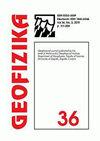森林火灾研究方向综述
IF 1.1
4区 地球科学
Q4 GEOCHEMISTRY & GEOPHYSICS
引用次数: 1
摘要
森林火灾每年都会造成环境和经济损失,尤其是在欧洲南部。估计火灾风险的方法从实际到科学各不相同,因为涉及不同的职业,如消防员、气象学家、士兵和护林员。物联网能够在一个地方连接不同的信息来源,然而,有时缺乏对导致灾难的使用和过程的理解。本文的目的是全面概述当今与火灾作战的可能性,并对不同的方法、技术和途径进行分类。考虑到我们正在处理的火灾信息的时间轴,我们提出了三个类别:过去主要指的是分析,现在包括监测和未来覆盖预测。每个类别都有详细的描述,用相关的工作和例子来证实,并丰富了挑战和未来的方向。处理森林火灾是非常复杂的,因此很难同时处理所有提出的类别。然而,由于可用信息的增加和来自不同研究领域的科学家的兴趣增加,有更多的例子交织在一起处理森林火灾。预计未来将有可能实时处理各种来源的数据,并以高时空分辨率预测火灾危险和风险。本文章由计算机程序翻译,如有差异,请以英文原文为准。
A review of forest fire research directions
Forest fires cause environmental and economic damages every year, especially in the southern part of Europe. Approaches to estimate the fire risk vary from practical to scientific, since different professions as firefighters, meteorologists, soldiers and foresters are involved. The Internet of Things enables to connect different sources of information in one place, however, the understanding of usage and processes that caused the disaster sometimes is missing. The aim of this article is to give a comprehensive overview of nowadays possibilities for fighting with the fires and categorization of different methods, techniques and approaches. Considering the timeline of the information about fires we are dealing with, we propose three categories: past which mostly refers to analysis, present which encompasses monitoring and future covering forecasting. Each of the categories is described in detail, confirmed with related work and examples, and enriched with challenges and future directions. Dealing with forest fires is very complex, therefore it is difficult to deal with all proposed categories at the same time. However, due to the growing amount of available information and increasing interest of scientists from different research fields, there are more examples of intertwined areas dealing with forest fires. It is expected that in the future it will be possible, in real time, to handle various sources of data and forecast fire danger and risk with high spatial and temporal resolution.
求助全文
通过发布文献求助,成功后即可免费获取论文全文。
去求助
来源期刊

Geofizika
地学-地球化学与地球物理
CiteScore
1.60
自引率
0.00%
发文量
17
审稿时长
>12 weeks
期刊介绍:
The Geofizika journal succeeds the Papers series (Radovi), which has been published since 1923 at the Geophysical Institute in Zagreb (current the Department of Geophysics, Faculty of Science, University of Zagreb).
Geofizika publishes contributions dealing with physics of the atmosphere, the sea and the Earth''s interior.
 求助内容:
求助内容: 应助结果提醒方式:
应助结果提醒方式:


